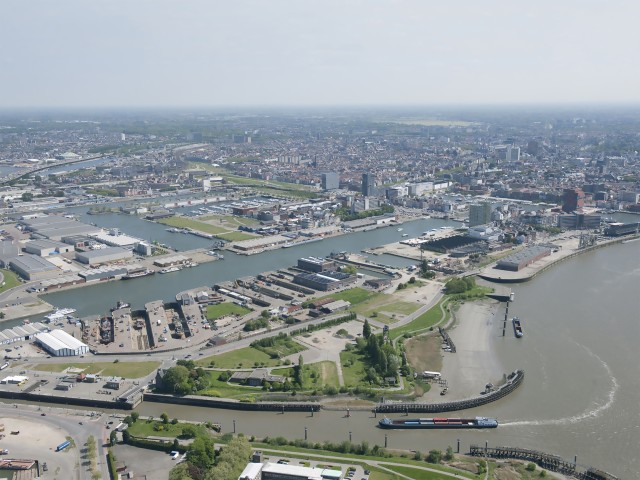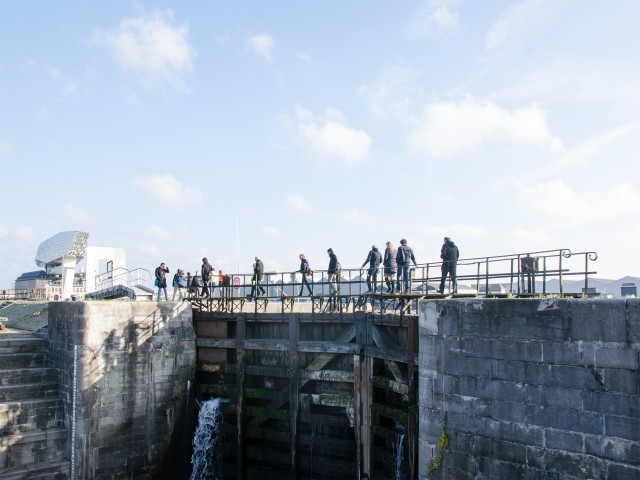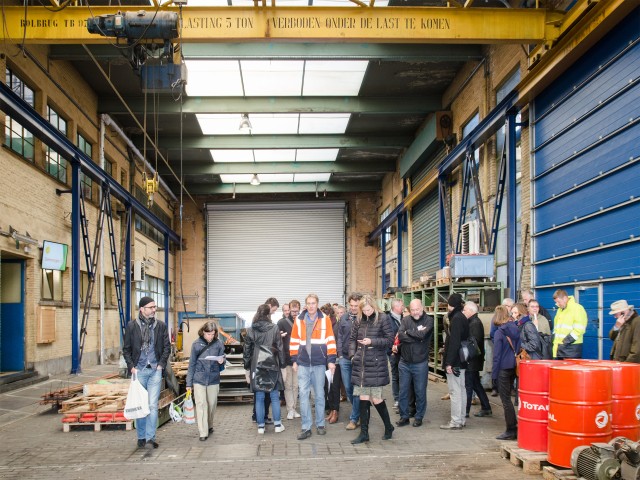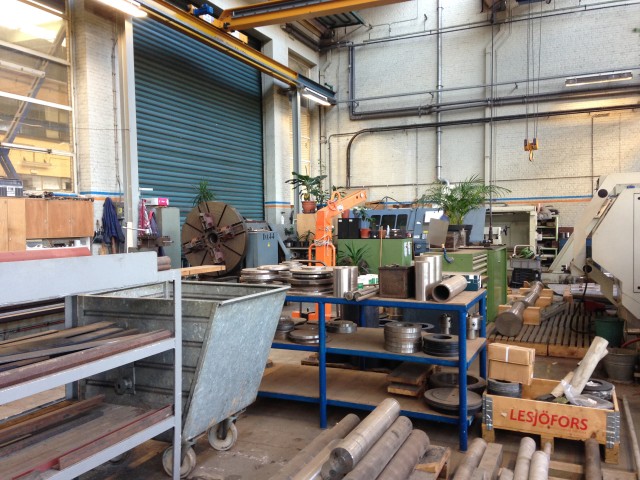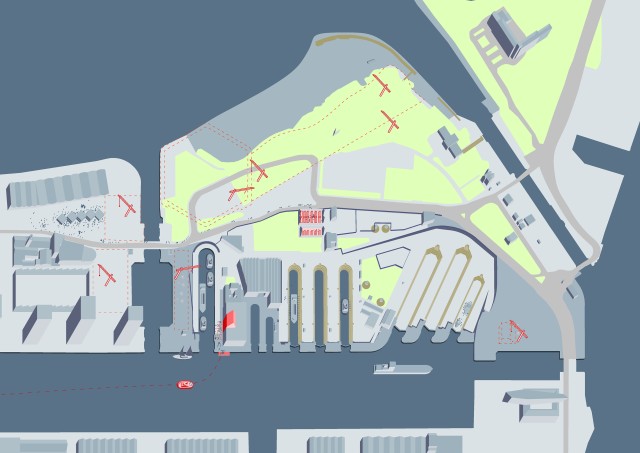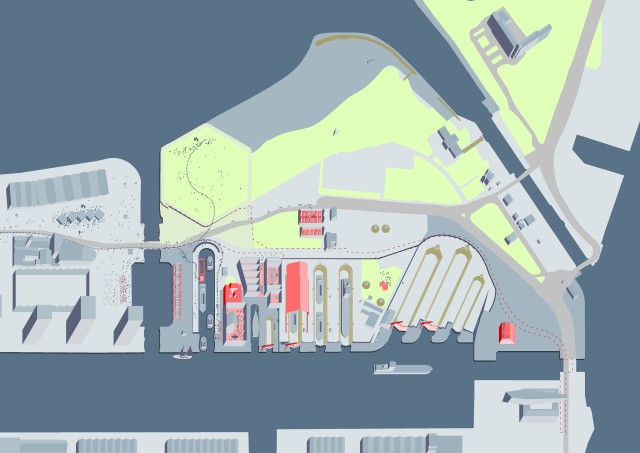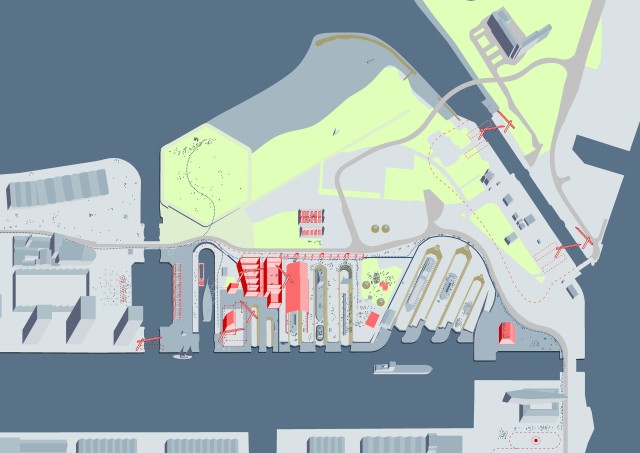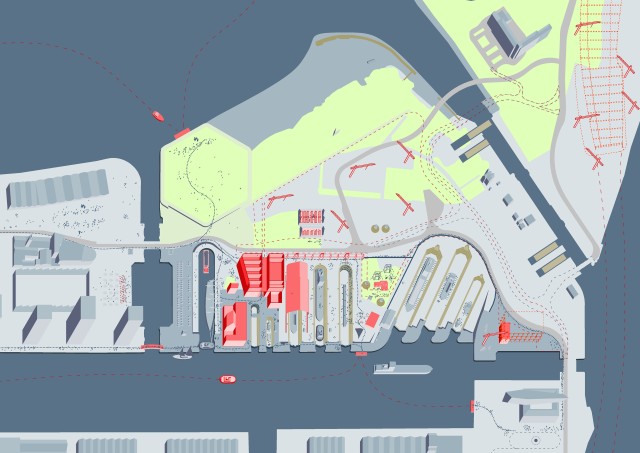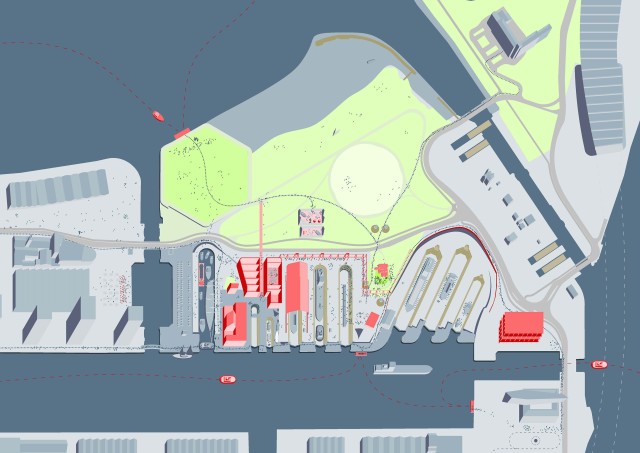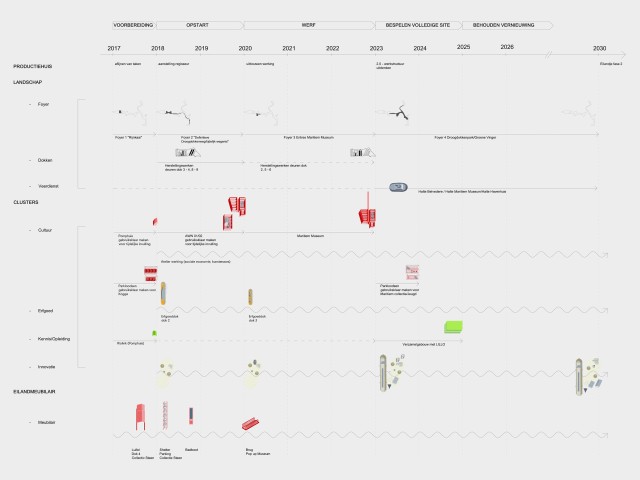Maritiem Park
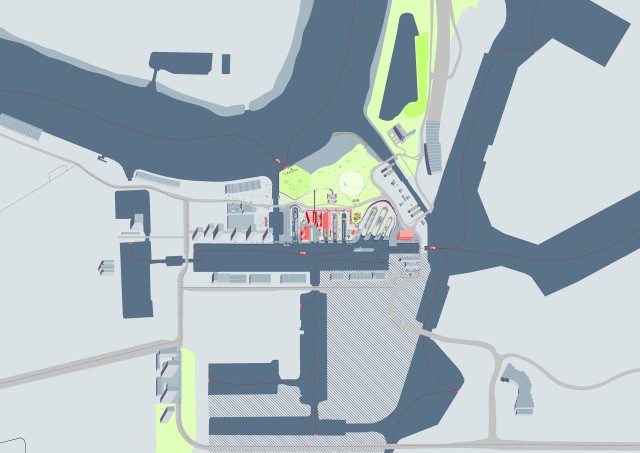
The former dry docks of Antwerp stand at the beginning of an urban transformation: in 2017 the harbour company moved its ship-repair facilities northward and the site was transferred to the City of Antwerp. It is a recurring tendency that the harbour, as a consequence of its growth, is gradually moving northward, freeing up harbour infrastructure. The city thus faces the challenge of seeking to connect with these places and redefining their identity without losing the connection to the dynamic history. The site of the dry docks forms the epicentre of an island undergoing a thorough transformation, moving closer and closer to the heart of the urban dynamics while remaining a blind spot on many mental maps.
The concept study for the Maritime Park is the first step in this redevelopment and should provide a clear and inspiring vision for the area while simultaneously setting guidelines for future projects. Exhibitions of maritime heritage should go hand in hand with an active use of the site as a workspace for artists and entrepreneurs and as a public space. Opening such a vast area with monumental infrastructure to the public and adding a new district to the city is a challenge that requires layered solutions in both the very short term (by looking for possibilities for meanwhile use) and the long term. We called it an ‘operational master plan’: on the one hand, it sets out a spatial vision for the site, its relation to the surrounding urban fabric and the development of a Maritime Museum. On the other hand, it defines the framework for a realistic exploitation and organizational model, enabling a mixed use of the site as a place for makers, workers and exhibition, and an implication of a diverse stakeholder field.
An endeavour on this scale is not a one-off project. It is a process that will span several decades and involve many stakeholders. The contextual conditions and programmatic questions will evolve over time. The framework we offer is a manual that provides the required support to take gradual but informed decisions in the time span from 2016 to 2030. It is combined with a charter that sets out the shared ambitions of the different stakeholders and that should even outlive the time span of the master plan.
Organic development does not equal chaos or a lack of vision. It requires an organizational structure that can mediate between three essential ingredients: developing, managing and programming. To act as the director of the operational master plan, we propose the establishment of a local production unit as an engine for development.
-
Location
Droogdokken eiland, Antwerp
-
Client
AG Vespa
-
Project
Finalized Study
-
Invited competition
2014
-
In collaboration with
NDVR, RebelGroup, Witteveen+Bos
-
51N4E project team
Freek Persyn, Agnes Heller, Jolein Bergers, Benoit Lanon
-
51N4E involvement
Urban design and guidance
